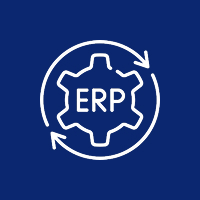SQL is at the core of nearly every software system, being the language that drives database communication. Data retrieval and transformation, reporting, and analytics are all handled by SQL. With such power comes such responsibility. SQL code, if not written with caution, can soon become messy, inefficient, and hard to work on—giving rise to slow performance, bugs, and frustration for teams in the long run.
Clean, maintainable SQL code is not a luxury—it’s a requirement for scaling applications, shared development environments, and long-term scalability. Writing clear, intentional SQL makes your work more understandable, reusable, and incrementally improvable over time.
Whether you’re working with small data sets or large enterprise databases, these best practices will assist you in writing SQL that is efficient, readable, and long-lasting.
Consistent Formatting Matters
Clean formatting is the way to achieve maintainable SQL. If your queries have a standard structure, they are easier to read and debug. Indentation, capitalization, and logical grouping of clauses (such as SELECT, FROM, WHERE, GROUP BY, etc.) can greatly enhance readability.
Good formatting also encourages collaboration, particularly in teams where several developers are reading or modifying the same queries. It’s simpler to catch errors, comprehend logic, and pass work along when everyone adheres to a standard format.
Be Explicit, Not Lazy
Selecting * is among the most widespread shortcuts to produce long-term problems. It is probably fast to execute, yet it might produce excess data transmission, heavier loads, and incompatibility problems when the schema of a table changes.
Being specific about the columns you require makes your queries more deterministic and easier to optimize. It also enhances documentation because readers know precisely which data is being utilized without needing to refer to the whole table structure.
Use Meaningful Table Aliases
Aliases make complicated queries easier—only if they are sensical. Defining aliases as a, b, or x can obfuscate your code. Use brief but descriptive aliases that indicate the purpose of the table in the query (e.g., cust, order, prod).
It becomes especially critical to do this when using joins or nested subqueries. Descriptive aliases enable developers to follow data movement through the query and decrease mental load while reading the SQL logic.
Comment Wisely
Comments are an underappreciated but valuable weapon. They bring clarity to a situation where query logic isn’t immediately clear or when business logic is heavily entwined with SQL conditions.
But comments need to be deliberate—don’t comment on trivial logic. Comment instead on why a query was written in a particular manner, not merely what it’s accomplishing. Quality comments can eliminate hours of frustration when debugging issues months down the road after writing the query.
Embrace Modularity
Rather than creating a single behemoth, unwieldy query, divide your logic into tiny, manageable chunks. Employ Common Table Expressions (CTEs), subqueries, or even database views to divide your SQL.
Modular queries are more testable, debuggable, and maintainable. This design encourages readability and allows you to identify performance hotspots or logical errors more effectively.
Optimize for Performance
Readability doesn’t mean sacrificing speed. A critical component of writing maintainable SQL is ensuring that it executes efficiently. Sloppily constructed queries place undue burdens on server resources, bog down applications, and infuriate users.
Employ indexing strategies judiciously, prevent redundant joins, and limit scans of big tables. Periodically review query execution plans and observe how data volume changes affect performance. Performance tuning must be a regular habit, not an afterthought.
Adopt Clear Naming Conventions
SQL code readability depends on naming conventions. Employ clear, descriptive names for tables, columns, and temporary variables. Refrain from using ambiguous names such as temp1 or tbl1 that are not descriptive of purpose.
Maintain naming conventions consistent throughout your database. This minimizes confusion, enhances documentation, and assists developers in joining quickly without browsing database schemas to understand.
Avoid Hardcoding Values
Hardcoded constants will function well in the immediate time but are sure to have problems later on. They hamper flexibility, complicate the code to fit changes, and take more time to modify in various parts of the system.
Rather, rely on query parameters, configuration tables, or logic in the application layer to respond to changing input. Not only is this a maintainability good practice, it also facilitates scalability and reusability.
Use Low-Level Tools Wisely
Stored procedures, triggers, and functions can contain intricate logic and encourage code reuse—but they can also obfuscate code if used recklessly. These mechanisms must be documented in great detail and examined for effectiveness.
Employ them when they bring genuine benefit to performance or readability. Refrain from filling your database with highly nested or excessively convoluted logic that might be managed more openly in your application tier.
Testing and Documentation Are Key
Every SQL query should be tested thoroughly, especially when it’s part of a production system. Test your code against edge cases, large data sets, and different scenarios to ensure it handles data reliably.
Also, maintain documentation that outlines database design, data relationships, query purposes, and any known limitations. Good documentation speeds up onboarding, eases debugging, and ensures your SQL remains a long-term asset, not a liability.
Collaborate and Review Code
Peer reviews aren’t limited to application code—SQL should receive the same level of scrutiny. Peer reviews catch inefficiencies, force standards, and lead to learning throughout the team.
Emphasize open discussion of best practices and maintain alignment using shared templates or guidelines. Shared culture results in cleaner, better, and more efficient SQL development.
Conclusion
Clean and maintainable SQL is not just about looks—it’s about creating queries that are robust, reusable, and poised for expansion. As applications mature and data gets increasingly complex, SQL needs to be written with focus and clarity so that it’s a fundamental development competency.
With precise, consistent formatting, no shortcuts, thoughtful documenting, and maximum performance, SQL can be coded not just successfully but professionally too. Spending extra time on good SQL isn’t merely good advice—it’s sound business sense.
Make every SQL count. Write it smart, write it clean, write it for tomorrow.
Contact Us Today













 Database Development
Database Development












































